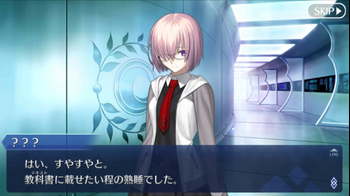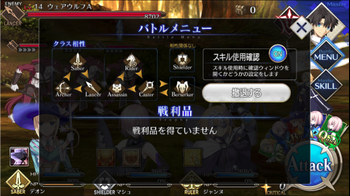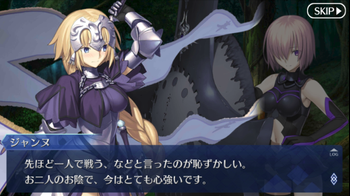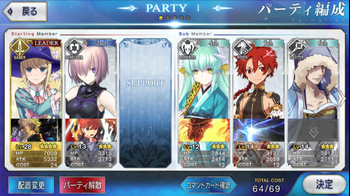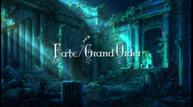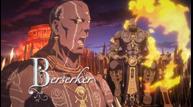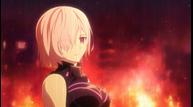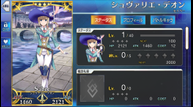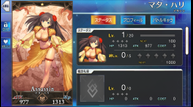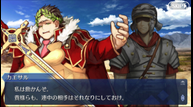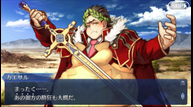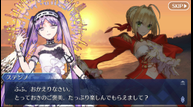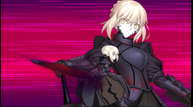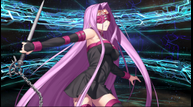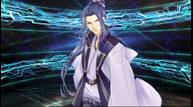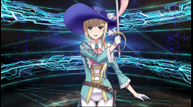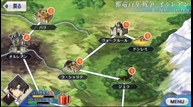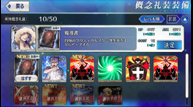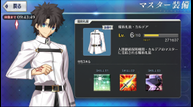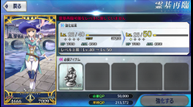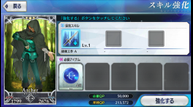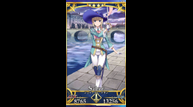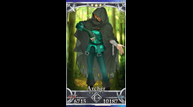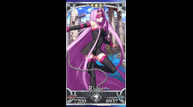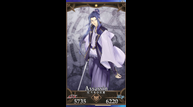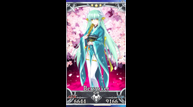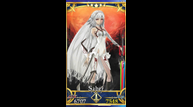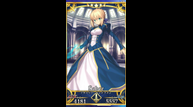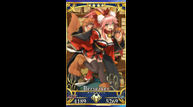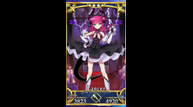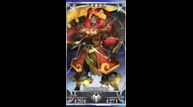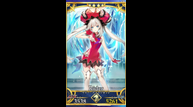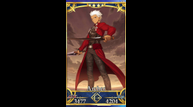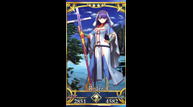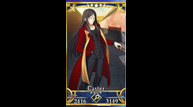
Fate/Grand Order Impressions
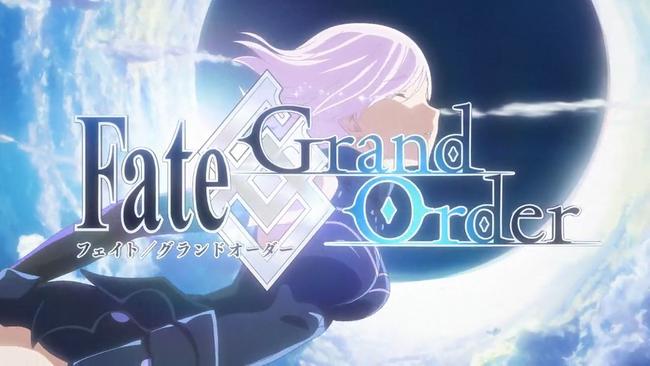
Love it or hate it, mobile devices have proven to be an intriguing market worth pursuing in the realm of video games. There is a massive plethora of games to choose from and searching for an amusing one can take a lengthy amount of time. This is especially true since its rapid growth means that the ratio of games worth playing versus games of dubious quality continues to rise at an exponential rate.
With that said, Fate/Grand Order is an interesting venture tapping into the RPG genre under the hood of a standard mobile game. I have put quite a lot of time into the game recently and wanted to share a few impressions for those looking for a this style of game on their Android or iOS devices.
Let's take a few steps back for a moment. Fate/Grand Order is a game with a fair bit of history behind it that primarily caters to fans of the Fate franchise. This is a long-running series that spans through all kinds of mediums from visual novels, anime shows, video games, light novels, and the list goes on.
Fortunately, those unfamiliar with the series don't need to know all the fine intricacies behind the lore of the Fate universe to get enjoyment from it.
When players boot the game up for the first time, they can choose to have a male or female avatar for their Master which can be swapped at any time and select a name for him or her. The story does not play out any differently depending on who players choose. It basically boils down to an aesthetic difference that's most prominently seen at a portrait in the corner and when a Master uses his or her skills in battle.
What separates this from other mobile games on the market lies within its combat system. A basic tutorial covers the essentials of battles; it's structured in a traditional turn-based RPG fashion in which allies and foes alternate turns.
Players can build a party of up to five characters, known as Servants, in which two will lead the charge at the start of the battle with a Support character slot reserved for either a story-relevant character, a friend's Servant, or a random stranger's Servant. The remaining three characters come in as reinforcements when a character falls in battle.
Turns are carried out by selecting three out of five command cards that are drawn each turn. These contain a combination of Quick, Arts, and/or Buster attack cards. Each of these three categories contain unique properties.
Quick attacks deal low individual strikes swiftly to generate critical gems that raise the chance to hit with a critical on the next turn. Arts attacks dish out moderate damage along with increasing a combatant's Noble Phantasm (NP) gauge, and Buster attacks whacks the enemy with a mighty blow.
Special effects occur when these are placed in a certain order as well. Starting an attack chain with an Arts attack, for example, will have the following cards produce more NP gauge for the character using them.
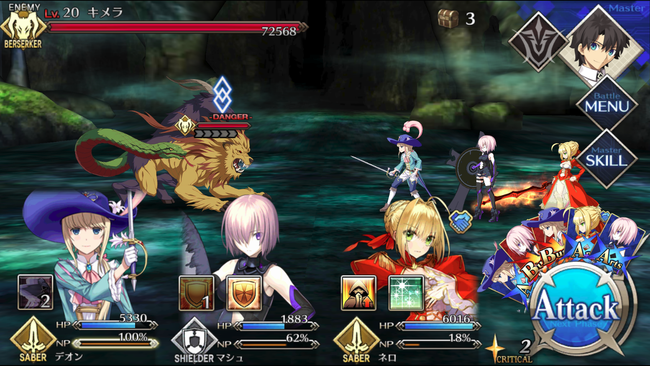
There are also additional benefits tied to the same type of card being linked together for the entire attack chain as well as the same Servant attacking three times in a row. Chaining three Quick attacks will automatically generate 10 critical gems before the attack animations start up, while three Buster attacks in a row grants a significant damage bonus.
If the same character attacks three times in a row, regardless of attack types involved, they will gain an Extra Attack at the very end of their chain.
Each Servant in the game comes with their own separate set of skills that range from offensive buffs to paralyzing an enemy for a turn and such. Once skills are cast, they go on a cooldown timer that progresses via turns meaning that they can't be recast until a set amount of turns pass.
Frankly, I feel that most of the cooldown times for a handful of skills are a bit on the long side. It does reinforce thinking ahead tactically, but the risk versus reward seems a tad too great for very short-term benefits against long-term consequences.
A player's own Master has his or her own set of helpful skills with cooldowns even more severe than most Servant skills in the game so players must be quite wary in challenging battles especially when there are multiple waves of foes involved. They can also cast a full-recovery spell up to three times with their Command Seals but beware, each Command Seal segment takes a whopping 24 hours to recharge.
Players can choose to save all 3 of their Command Seals just in case their whole party gets wiped out because they can use all 3 Command Seals to fully revive their entire party with full Noble Phantasm gauges ready to go. If they less than 3, they can choose to spend a Saint Quartz for the same effect though these items are very special and I'll tell you why in a bit.
Another mechanic to pay attention to is the game's two sets of rock, paper, scissors. In Fate/Grand Order, each Servant and enemy is tied to a specific Class. These Classes are tied to Heroic Spirits, which are central figures to the Fate universe that primarily serve as combatants all throughout the whole franchise.
The two weapon triangles in the game are fairly straight forward and clearly lay out which Classes are weak and strong to each other. Both sets are independent of each other. If one Class is not in the same weapon triangle as another Class, they will not affect one another in any significant way.
The Berserker is the only exception to this rule in which every Class is weak to it, but the Berserker itself is also weak to every other Class in the game. Shielder is a separate entity that's not affected by the weapon triangle system at all due to story-related reasons.
I personally found myself getting swept up in the heat of combat in Fate/Grand Order. It is definitely not an easy game once the game starts pumping out more and more dangerous enemies in each stage. It requires proper party configurations, smart skill management, and a fair bit of luck getting a decent hand of command cards per turn.
Plus, the game heavily encourages either using a story-related Servant for Main Quests since their stats and skill sets are often quite useful or using a friend's Servant for Free and Daily Quests because players cannot use the Noble Phantasm of a random stranger's Servant.
Luckily, I've found a lot of great people who have amazing Servants that I can use as Support. Of course, mileage varies heavily in this aspect. Seek a group of people playing it or send out invites to random people and cross your fingers that they accept you.
Complex and wordy plotlines are a staple feature in the Fate series and Fate/Grand Order is no different. To keep things as simple and concise as possible, the story revolves around traveling through time to quell abnormal anomalies that inadvertently threaten the future of humanity in the current time.
Once again, no prior knowledge of the Fate series is required to play the game, but a lot of the story may be lost to outsiders especially since there are many nods to other entries in the franchise. In fact, a handful of the Servants in Fate/Grand Order come from other titles in the series including Nero (Saber from Fate/Extra and Fate/Extra CCC), Gilles de Rais (Caster from Fate/Zero), and Jeanne d'Arc (Ruler from Fate/Apocrypha).
Mobile games often carry some sort of stamina or fatigue system that restricts game time and Fate/Grand Order is no different. Action Points (AP) dictate not only how many quests a player can embark on, but also the difficulty of missions. Missions with higher AP requirement may be more challenging, but also carry a higher potential of great rewards.
The AP cap is raised every time an account levels up along with automatically replenishing the AP meter. Anticipating when a level up is about to happen is a key factor in efficiently planning which stages to play at a given time.
My gripe about the current state of the AP system is that it takes a whopping 10 minutes to recover just 1 AP! At the moment, I have a maximum of 72 AP and if I were to spend all of it without leveling up, it would take 12 hours to fully fill up my AP gauge. Waiting 10 minutes for a single Action Point to be recharged seems a bit absurd and negatively impacts the longevity of my time investment with it.
There is one other way to regain all AP though - a Saint Quartz. Saint Quartz are probably the single most valued item in Fate/Grand Order. Not only can one of them reclaim all of a player's AP back, but a single one can also expand the maximum limit of your inventory.
You think one is good? Four of these things can get you a single roll on the game's gacha slot machine and maybe you'll get something really good from it - perhaps a 4-star or 5-star Servant. Better yet - forty Saint Quartzes open the path up to a 10-roll meaning there're TEN chances to get amazing Servants and/or Craft Essences (which I'll get into a little bit).
You can earn Saint Quartzes by completing entire stages. This typically consists of 3-4 battle encounters to earn one of them or receive them as daily login bonuses. On the other hand, just tab over to the game's cash shop and you'll find lovely bundles of them if you pony up some real-world money. Needless to say, this is where Fate/Grand Order makes money.
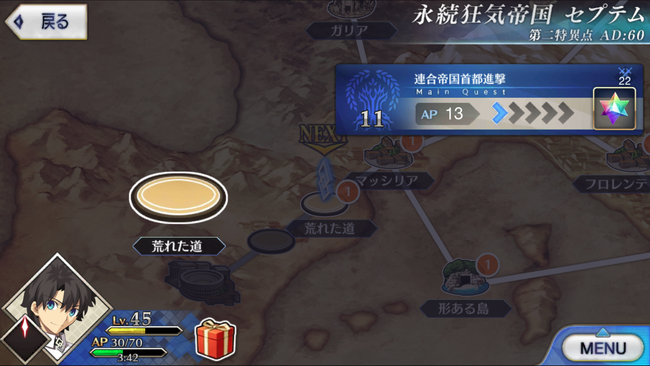
As I touched upon a bit earlier, Craft Essences are equipment pieces that can be equipped onto any Servant. They often add bonuses to Attack, HP, or both. Some have the special effect of having the equipped Servant start off with more NP along with other bonuses.
These can be swapped freely between Servants though the drawback to equipping them is increasing the Cost of a Servant. At the party configuration screen, Cost administers how much a player can bring into battle meaning a low-leveled Master can't bring in a super powerful team. Just like with AP, the Cost limit is raised over time as a Master increases his or her level.
There are many other subsystems inside Fate/Grand Order including leveling up Servants with EXP cards and Craft Essences with other unused Craft Essences along with Ascension for Servants that grant them an upgraded look and new skills.
Individual skills can also be leveled up utilizing specific class orbs while Noble Phantasms are strengthened by feeding a Servant a duplicate of itself. All of this expends the in-game currency (QP) which is gained after each battle and daily login bonuses.
In terms of visuals, this game is quite a treat for the eyes. The quality of artwork is excellent all-around and the guest artists contributing Servant designs are on point in delivering a variety of distinct flavors to the combatants. Models for the Servants were crafted quite well; they move smoothly and their attacks are quick, but get the job done.
Noble Phantasm animations, on the other hand, are appropriately over-exaggerated and a visual spectacle. Sound design deserves a fair bit of credit as well because there were some really engaging tracks for critical moments in the plot. The sound effect when a critical strike lands is so rewarding.
Normal enemies suffer as a result though since there's not a lot of variety from them outside of different weapons and altering the color palettes of the same enemy model to indicate the difficulty of them.
Technical performance boils down to whether your Android or iOS device supports it. I've been playing it on my Nexus 7 (2013) and it has been fairly smooth all around. The only time it really chugs for me is when there are a lot of special effects going on at once.
It was really noticeable for me when doing a flashy Noble Phantasm attack in the Fuyuki City stages. There is also some slight mini-freezes when critical gems are being distributed to my drawn cards and calculating the chance of a critical strike from a specific card.
Ultimately, Fate/Grand Order is filled with an abundant amount of interesting ideas that are a bit set back by its foundation as a mobile game. There are heavy RPG mechanisms in place and it provides an amusing experience to those who are willing to make the commitment to learn it.
I strongly recommend Fate fans to play it and RPG fans to dip their feet in it to see if it's their cup of tea. There are still many content updates to come, so I'm not treating this as a review of any sorts; it has plenty of time to improve.
View the gallery down below for a bunch of screenshots from Fate/Grand Order which is out now for Android and iOS devices. Even though the game is technically only out for the Japanese market, there's a lot of English in it especially in the menus. Navigating through the game shouldn't prove to be too difficult and there are many guides around for it.
